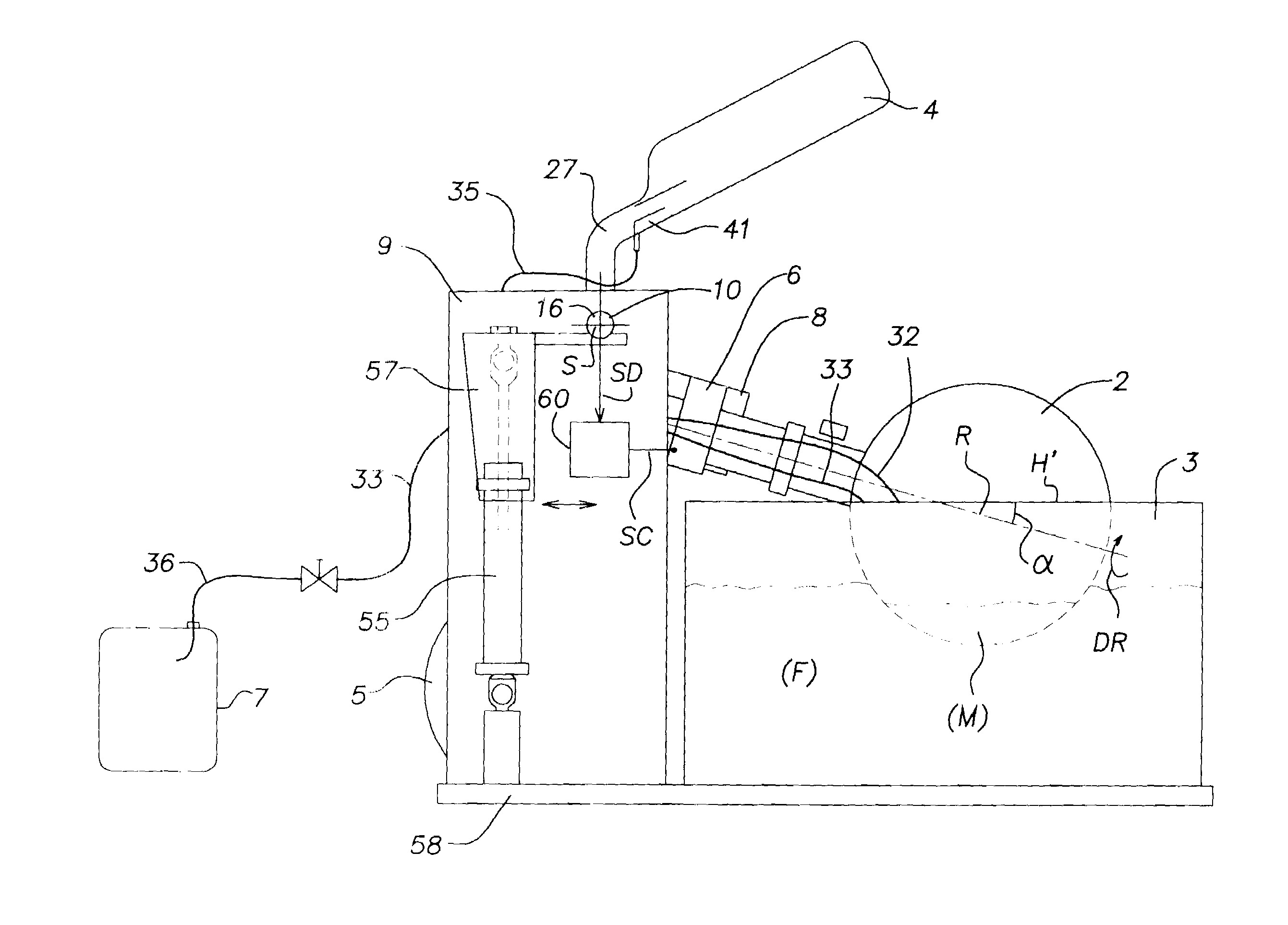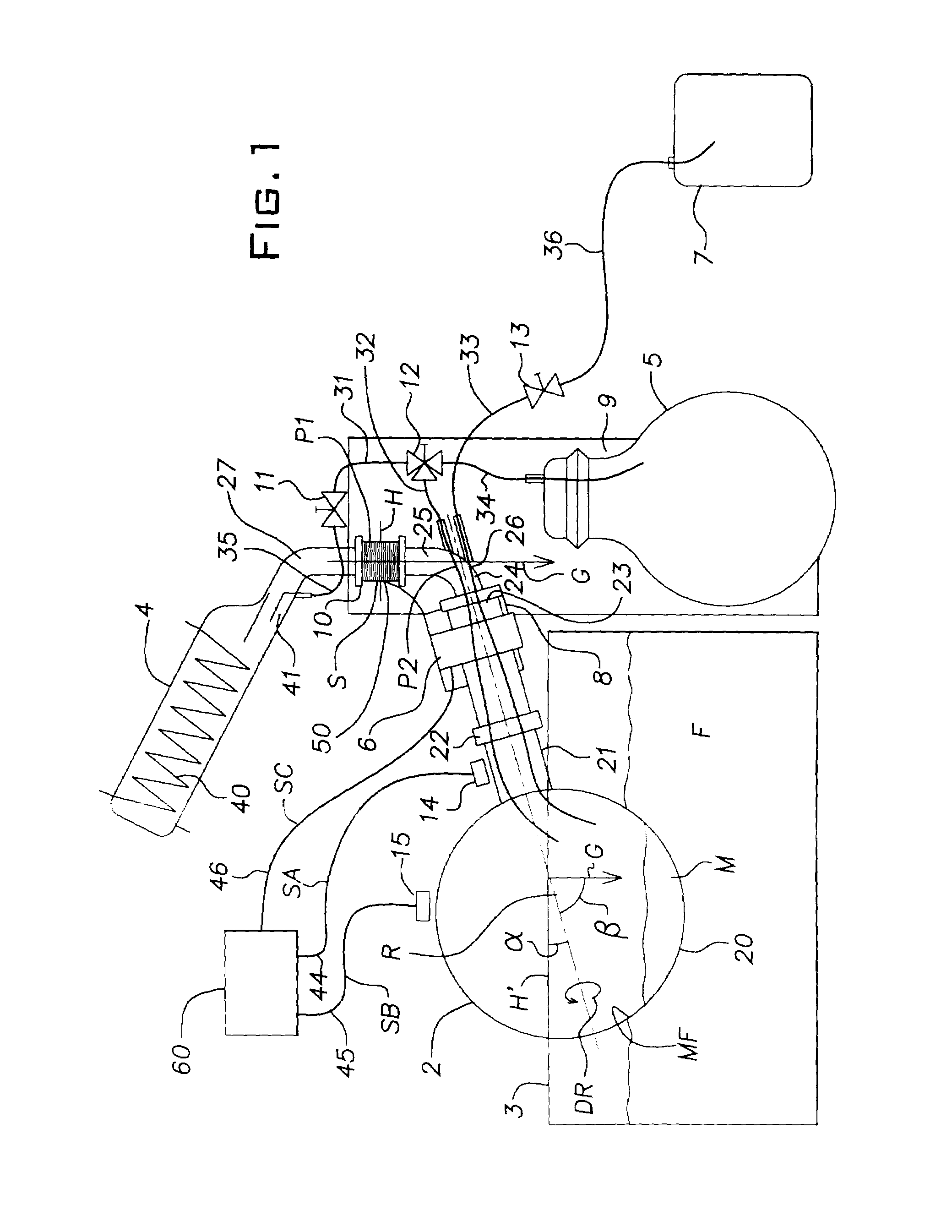Rotating evaporator with process-dependent rotating speed regulation
a technology of rotating speed regulation and rotating evaporator, which is applied in the direction of separation processes, instruments, specific gravity measurement, etc., can solve the problems of limited efficiency or evaporation capacity of rotary evaporators, and achieve the effect of increasing the evaporation surface of medium
- Summary
- Abstract
- Description
- Claims
- Application Information
AI Technical Summary
Benefits of technology
Problems solved by technology
Method used
Image
Examples
Embodiment Construction
[0065]The rotary evaporators according to FIG. 1 and FIG. 2 each comprise a rotating container (or: work vessel, rotating flask) 2 that can be rotated (turned) around an axis of rotation (turning axis) R via a drive means 6. The rotating container 2 dips into a liquid bath 3 with a liquid f. The liquid F. serves as heat transfer medium and can consist of water or, especially at higher temperatures, also of mineral or silicon oil or also of glycol. The inclination of the axis of rotation R relative to the horizontal H′ oriented orthogonally relative to gravity (gravitational force) G is characterized by an angle α and the inclination of the axis of rotation R relative to the vertical oriented parallel to gravity is characterized by an angle β, where α+β=90° and β≠90°.
[0066]At the opposite end of the drive means 6, a receiving device (connecting sleeve, hollow shaft) 23 is arranged that is stationary, that is, cannot be rotated at the same time, and surrounds and holds a line 26 to co...
PUM
| Property | Measurement | Unit |
|---|---|---|
| acute angle | aaaaa | aaaaa |
| acute angle | aaaaa | aaaaa |
| gravity | aaaaa | aaaaa |
Abstract
Description
Claims
Application Information
 Login to View More
Login to View More - R&D
- Intellectual Property
- Life Sciences
- Materials
- Tech Scout
- Unparalleled Data Quality
- Higher Quality Content
- 60% Fewer Hallucinations
Browse by: Latest US Patents, China's latest patents, Technical Efficacy Thesaurus, Application Domain, Technology Topic, Popular Technical Reports.
© 2025 PatSnap. All rights reserved.Legal|Privacy policy|Modern Slavery Act Transparency Statement|Sitemap|About US| Contact US: help@patsnap.com



